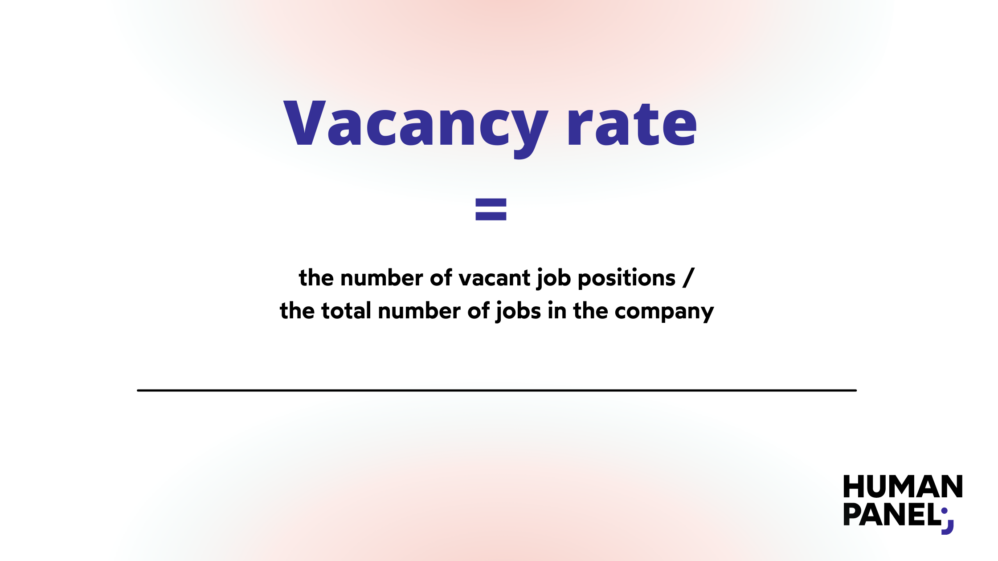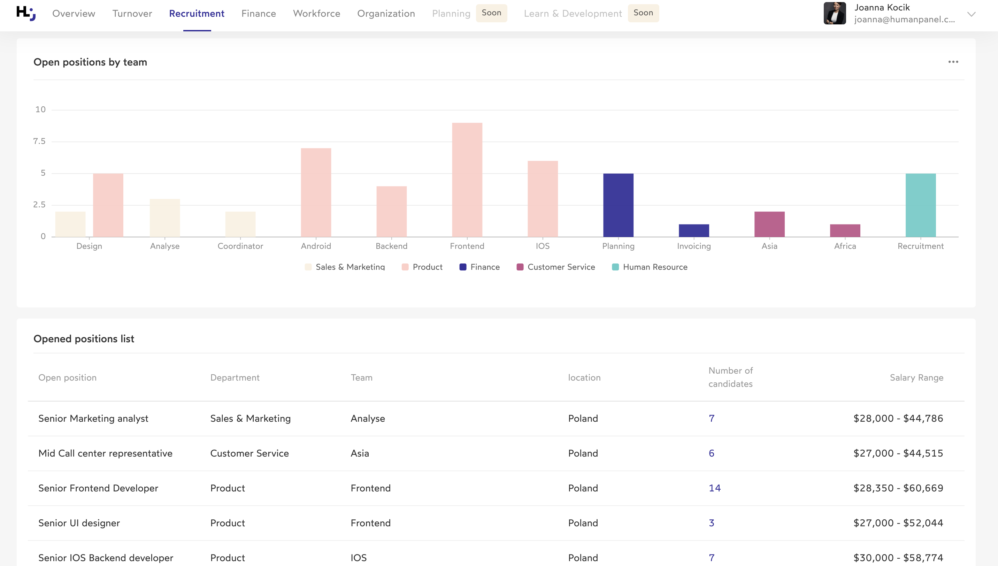Vacancy rate: 5 things you should know

It is essential for any business to know what their employee vacancy rate is and how much it costs.
If you are reading this, you are probably wondering what vacancy rate is all about, and why you should measure it. What are the reasons for a high or low vacancy rate? How do you calculate it and how do you evaluate its cost? Stay with us to learn more about this key recruitment metric.
1. What does vacancy mean?
Vacancy rate definition
The vacancy rate is also known as the job openings rate.
It indicates the percentage of unfilled positions compared to the total number of positions in the company.
It is often confused with the turnover rate, but there is a big difference between the two. The turnover rate indicates the percentage of employees who have left a company over a given period, while vacancies are the result of this turnover, that is, the employees who leave the company.
2. How to calculate the vacancy rate?
To calculate the percentage of open positions, compare the number of vacancies with the total number of jobs in the company. If you want to narrow down the area, you can compare the number of vacancies with the total number of jobs in a particular department or team.

Remember – you don’t have to calculate the vacancy rate manually. If you are using a dedicated people analytics solution, this data will be visualized in clear charts.
If you have never used people analytics tool, sign up for a free demo of Human Panel and see what other metrics you can monitor to effectively run your organization. People analytics will provide you with such data as open positions by team and department, candidates per job offer, and the most efficient sources of hire.

See also: all features and metrics available with Human Panel.
3.What are the market benchmarks for employee vacancy rate?
The employee vacancy rate in the Eurozone was 2.3% in the second quarter of 2021, while in the whole of the EU, it was 2.2%.
The rate is up from 2.1% in the previous quarter and from 1.6% in the second quarter of 2020.
Among the EU Member States, the highest job vacancy rate in the second quarter of 2021 was observed in the Czech Republic (4.9%), while the lowest was in Greece (0.3% in the first quarter of 2021). In the U.K., vacancies hit 1.1 million between July and September 2021, the highest level since records began in 2001. The largest increase in vacancies was in the retail sector and in motor vehicle repair.
The established market benchmark for vacancy rate is around 3.5% but a lot depends on the country, industry, and the organization itself. Traditionally, the vacancy rate is much higher in the healthcare sector or in industries that are missing particular skills.
4. What do high and low vacancy rates mean?
Once you collect the data and calculate the vacancy rate – what can you do with the result? What does a low or high number mean?
A high percentage can be a sign of a high demand or a low supply in the job market. It can also mean that there are jobs available, but they remain unfilled.
The low rate of vacancies could be an indicator of good HR processes in the company and the attractiveness of the vacancies that are advertised. In other words, it might mean that there is a great demand in the market for the advertised job offers.
5.How much does a vacancy cost?
The cost of vacancies can include various factors and there is no universal formula for calculating it. Apart from the lost revenue and paying current employees overtime due to staff reduction there are other costs of unfilled positions. More work for your staff means more stress and pressure, which can lead to burnout and drop in productivity, or – in consequence – higher turnover.
Note that filling the vacancy is often more cost-efficient than paying overtime. What’s more, excessive workload can mean a drop in the performance quality, which may have a negative impact on customers and customer satisfaction in the end.
How to calculate the cost of vacancy?
Calculating the cost of unfilled positions accurately can be challenging, but dedicated people analytics tools can make the process easier.
To calculate the COV, you first need to count:
- the average revenue per employee
- the role-specific revenue
- the average cost per employee
- the payroll and benefits savings
The calculation of COV is quite complex, so we recommend that you use the available tools for this.
Tools that can help you in your HR management
With Human Panel, you can track job openings and vacancies by team and improve your recruitment funnel by prioritizing key areas and roles. This will help you avoid excessive revenue losses and avoid work overload and burnout among the employees.
People analytics software also allows you to track other key HR metrics, such as time to hire, applications per job, and candidates per hire to help you manage your recruitment. You can control the pace of the recruitment process and review the effectiveness of the entire recruitment funnel. Sign up for a free demo to see how it works in details and control all your HR processes at one intuitive platform.



